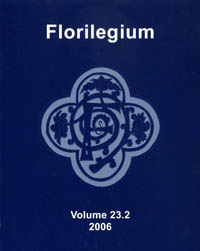The Uses of Torture and Violence in the Fabliaux: When Comedy Crosses the Line
Abstract
Comic violence is a device used in the Old French fabliaux to mete out just punishments, to castigate transgression, and to amuse a mixed audience for whom violence was all too common. Yet despite the farcical nature of most violence in the genre, some plots cross the line separating violence and torture from acceptable narrative motifs in medieval culture. It is in these thirteenth-century tales that a modern audience sees realistic medieval fears of power and dominance, where justice is replaced by tyranny, and violence is no longer merely a matter of fun and amusement. Du Prestre crucefié, De Connebert (Li prestre ki perdi les colles), and La Dame escoilleé engage in realistic forms of torture, whose purpose is to cause prolonged pain in a public demonstration of power and dominance that parodies legal practice. By depicting such excessive forms of violence in the guise of cleverly crafted tales, each of these three fabliaux evokes horror and condemns the excessive brutality that stretches the limits of comic violence.Downloads
Published
2006-06-06
How to Cite
Tracy, L. (2006). The Uses of Torture and Violence in the Fabliaux: When Comedy Crosses the Line. Florilegium, 23(2), 143–168. Retrieved from https://journals.lib.unb.ca/index.php/flor/article/view/12552
Issue
Section
Articles



